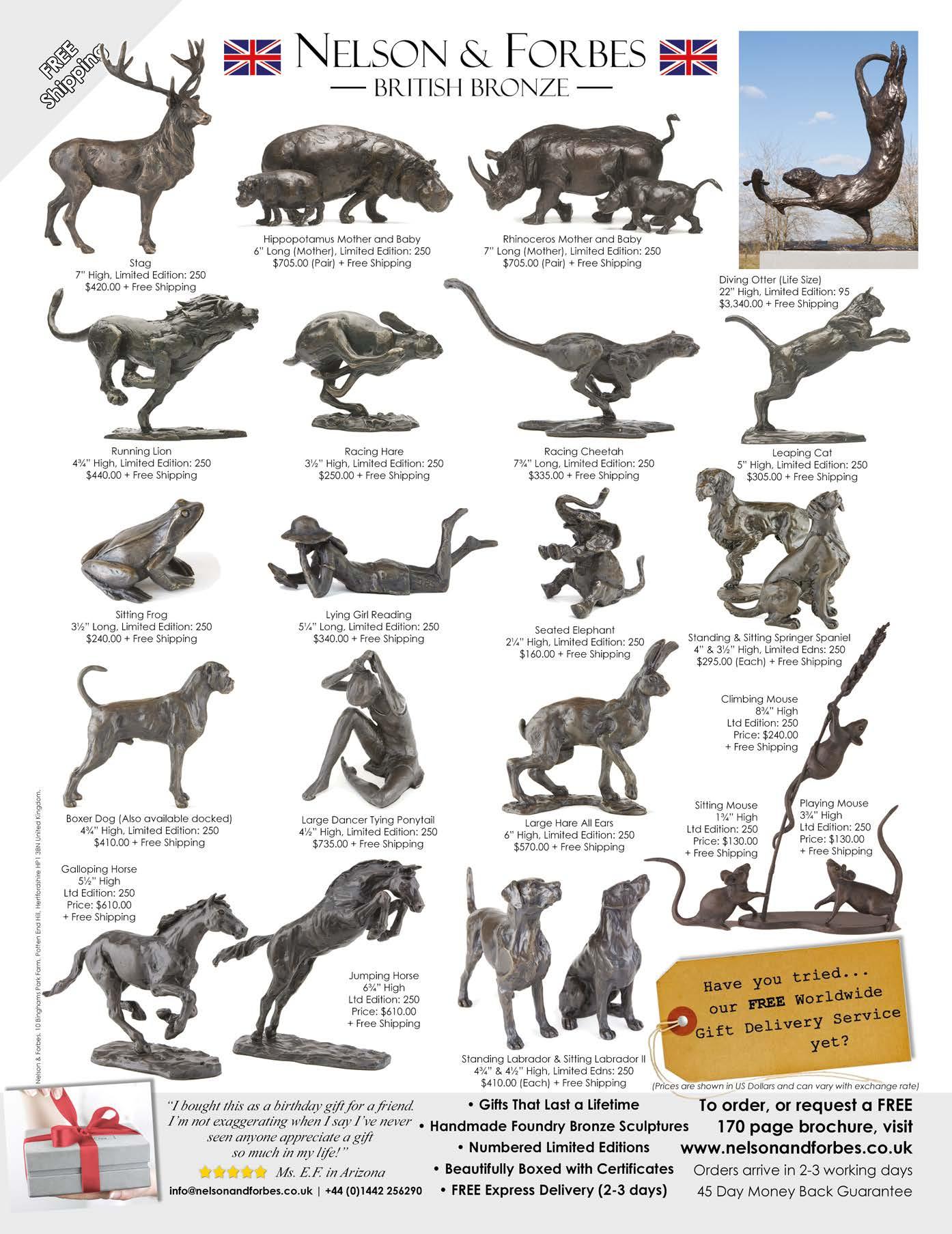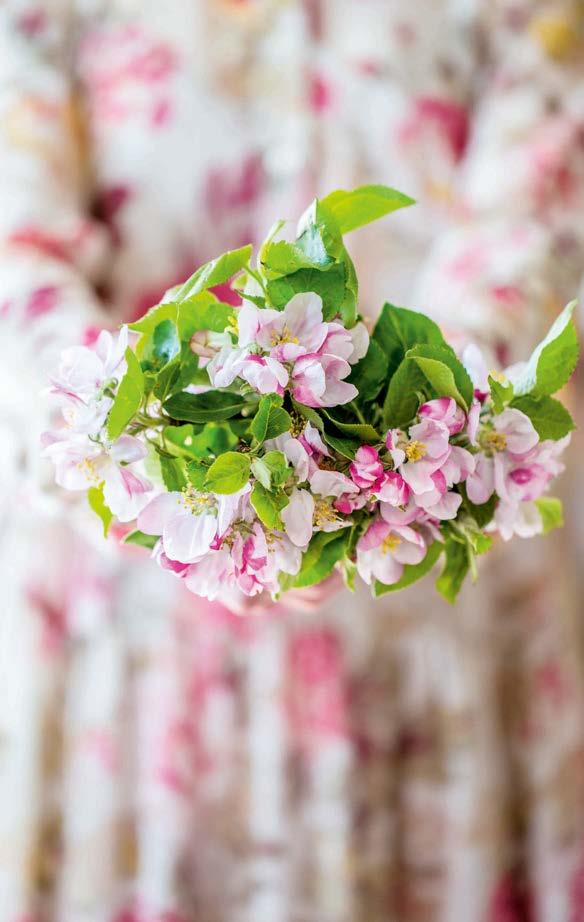
7 minute read
CREATING AN ENGLISH SITTING ROOM All the
This grand, classical drawing room has so many ingredients that are typically English that it is hard to know where to begin. Perhaps most notable, along with the flowers and the casual cocktail of colour and pattern, is the presence of a magnificently relaxed and saggy sofa, layered with squishy cushions.
Creating AN ENGLISH SITTING ROOM
Praised for its relaxed elegance and comfort, the perfect sitting room is deceptively layered yet achievable, as Ros Byam Shaw explores
There are certain elements of the English sitting room – or drawing room, if you prefer the more old-fashioned term – that are non-negotiable. There should be a sofa, ideally squashy, plump, and loaded with cushions – the sort of sofa you can curl up in, lie down on, and share with your dog. Armchairs can be substituted for the sofa, if necessary, as long as they are the sort you can sprawl in. The room needs a focus, a direction in which to point the sofa, and this can only be a fireplace. Best of all is an open fire, piled with logs snapping with flames in winter, its grate cool and dark on summer evenings when doors stand ajar into the garden.
Sofa and fireplace are the axis around which all other elements of the room are built. For comfort and convenience, these should include side tables big enough to hold a drink, a book, and a lamp, and perhaps a padded stool between sofa and fireplace for more books and somewhere to put a tea tray. Once you have these, you have everything you need. The same formula applies whether your room is large and high-ceilinged with tall sash windows and an ornate cornice, or cosy and beamed with a broad inglenook fireplace. All that changes is the number and positioning of sofas and armchairs, the intention being to create a conversational group in front of those dancing flames.
When it comes to filling the gaps, this is a room where style and creativity are on show. It is the most public room in the house, but, unlike the kitchen,

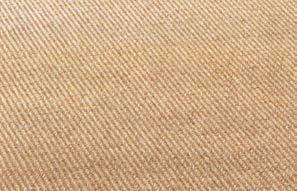
It is the place to display any furnishing trophies. Pieces you have gathered over time. Things that confer a little jolt of pleasure whenever you look at them

which you may also use for entertaining, it has a less specific role. Its purpose is mainly for rest and relaxation, and as a place to gather and talk. So once seating and lighting are sorted, with sofas, armchairs, and table lamps, it is the place to display any furnishing trophies – the inherited secretaire, the oil painting you splashed out on, the expensive rug. Ideally, these are pieces you have gathered over time, things you have been given, or have bought because they delight you, things that confer a little jolt of pleasure whenever you look at them.
No one can tell you what these things should be – there is no magic formula – but, it is the mix of furnishings, including pictures on the walls, curtains, upholstery fabrics, rugs, and ornaments, that give a room its character and atmosphere. This can mean not only pieces from different eras, but also different cultures – a Turkish suzani thrown over the back of a sofa, a group of Indian miniatures on the wall, an African basket.
In truth, this mix is difficult to get just right. The best decorators make it look easy. A master like Robert Kime can put an eighteenth-century painted Italian cupboard, a French provincial table, an English wing chair, curtains made from Anatolian tent hangings, a Turkish rug, and a 1920s standard lamp all in the same room, and create an effect that is harmonious, and looks very like the result of years of thoughtful acquisition by several generations of owners. This ‘layering’ is at the heart of what makes an English room distinctive. Because it is inclusive, it makes you feel welcome, and because there appear to be no strict rules, you feel you can relax.
For those of us who are not professional decorators with long experience and generous budgets, getting it right is likely to be a process of experimentation – adding and subtracting, moving things round until you get what Nancy Lancaster called ‘a judicious mixture that flows’. Scale is also important – oddly, big bits of furniture look marvellous in small rooms, while lots of small pieces look as mincing and bitty in small rooms as they do in big ones. Scale equally applies to textiles and wallpapers – a sprigged fabric to complement a bold tree of life, neat checks with blowsy chintz, stripes with paisley, plain on pattern and pattern on plain. To weave it all together, you need a palette of colours that

ABOVE Whilst this is English style at its most ascetic, the English trope of sofas facing one another on either side of the fireplace persists. LEFT This sitting room is almost too poised and chic to be typically English. The comfort of a deep sofa with a generous loading of cushions and a thick rug laid over the matting help it to qualify, but still at the very smartest and tidiest end of the Englishstyle spectrum.
You need a palette of colours that bring out the best in each other instead of clashing and disagreeing

When the arrangement of doors, windows and fireplace allows, to have sofas facing each other on either side of a fireplace is comfortable and looks balanced. There is no need for them to match.
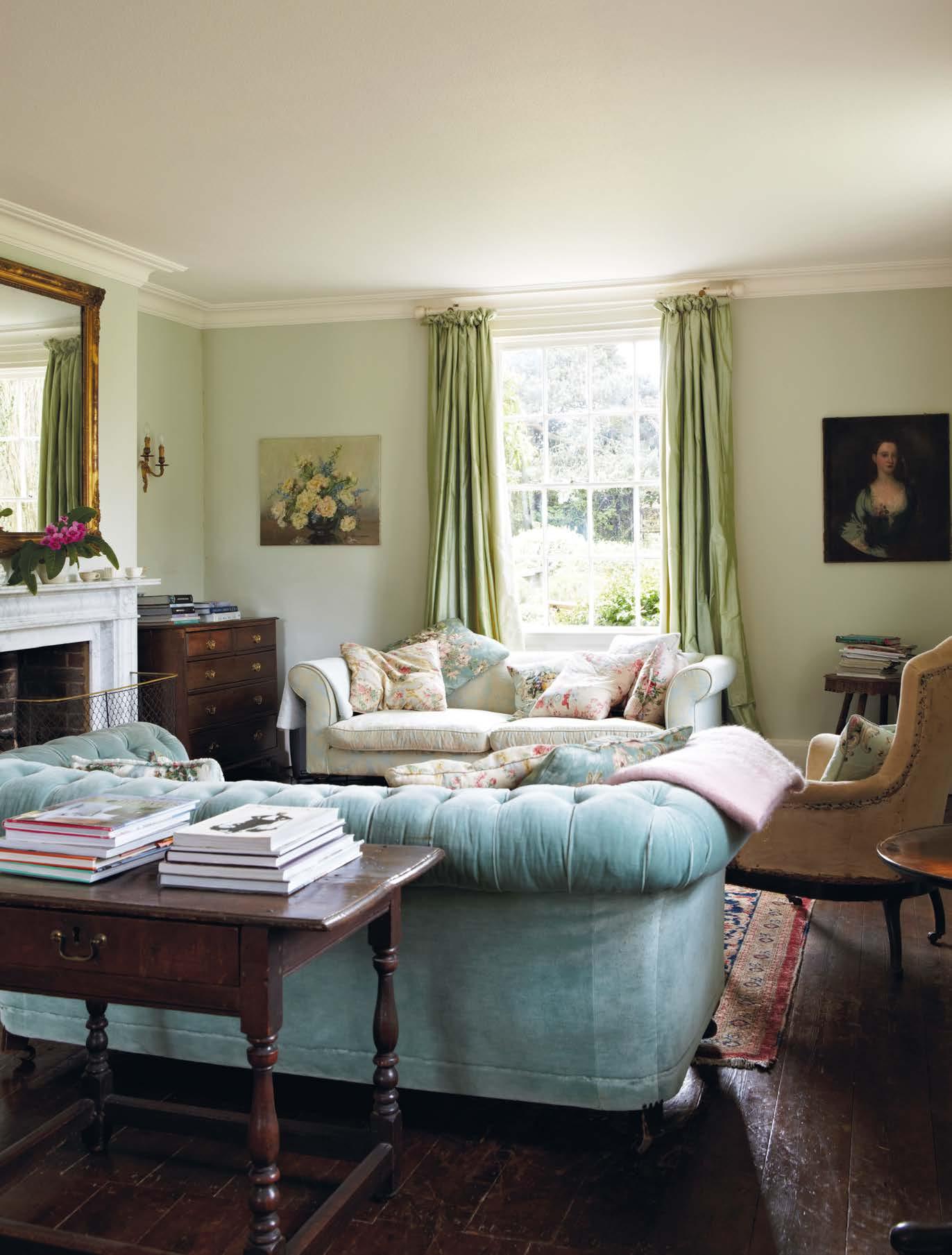
bring out the best in each other instead of clashing and disagreeing. This is much more straightforward if you limit a room to shades of white and cream or taupe and coffee, but also too restrictive to be truly English. Better to find a colour thread or theme, perhaps taken from the curtains or the sofa upholstery, and work around it, remembering that you can’t always predict what will please and what won’t, so it’s worth trying out different combinations.
Scale and harmony also apply to ornaments, their size and placing. Little things look better in herds than dotted around singly. Some, like pretty boxes, are best appreciated from above so could be laid out on a side table. Others are best seen in silhouette ranked along a mantelshelf. Just as you can play with patterns, colours, and scale, so you can twiddle the dials of symmetry in arrangements that subtly subvert expectations, setting up a framework with a pair of tall candlesticks, or matching jugs, and weaving things of differing heights and shapes in between. It’s a game you can play endlessly to get different effects.
There is one last element that many would consider essential in a sitting room, and that is the television, assuming you do not have a secondary reception room, snug, or playroom where watching it can be indulged like a guilty secret. If the fireplace is the focal point of the room, then the television needs to be next to it. I have seen various ways of accommodating televisions – inside a cupboard, wall-mounted in a box behind doors from a glazed antique cabinet, and tucked under the heavily embroidered cloth of a corner table. As long as it is not so big that its blank, black oblong dominates, I would rather see it than not, though it is nice to be able to hide it on occasion, and I note that televisions have been censored in every photograph I have chosen to illustrate this feature.
The cherry on the cake of a room made from these ingredients is fresh flowers – one of Nancy Lancaster’s three ‘tricks’. She suggested ‘masses of them’, along with open fires and candlelight. If you have a large, productive garden and time for flower arranging, or a generous flower budget, then you can follow Nancy’s advice to the letter. If you live in the country, there are certain times of year when you can pick armfuls of cow parsley or foxgloves. For longer-lasting displays, there are pot plants, which are having a fashion moment. For something traditional, and typically English, you might choose pelargoniums, which some people can persuade to flower all year if kept indoors. n
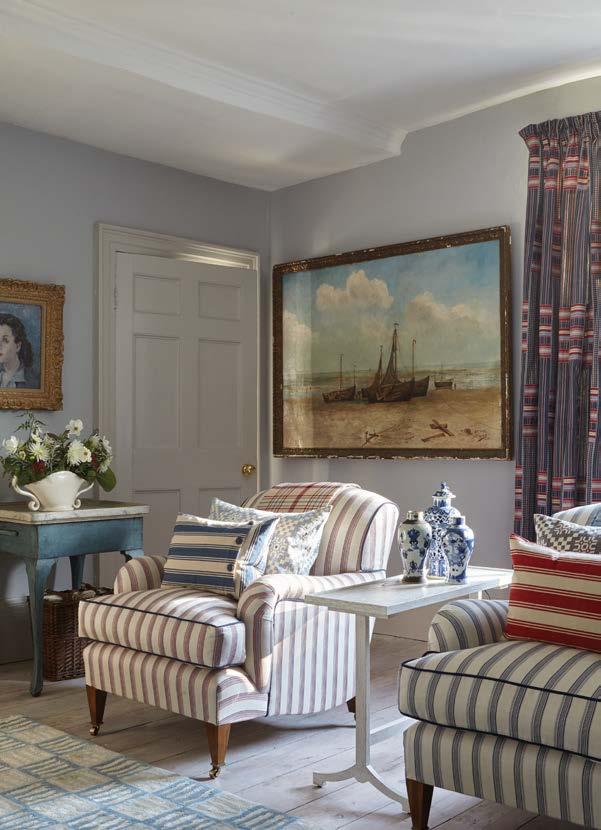
To discover the essential ingredients to create timeless English interiors for the whole house see Perfect English Style by Ros Byam Shaw (Ryland Peters & Small).
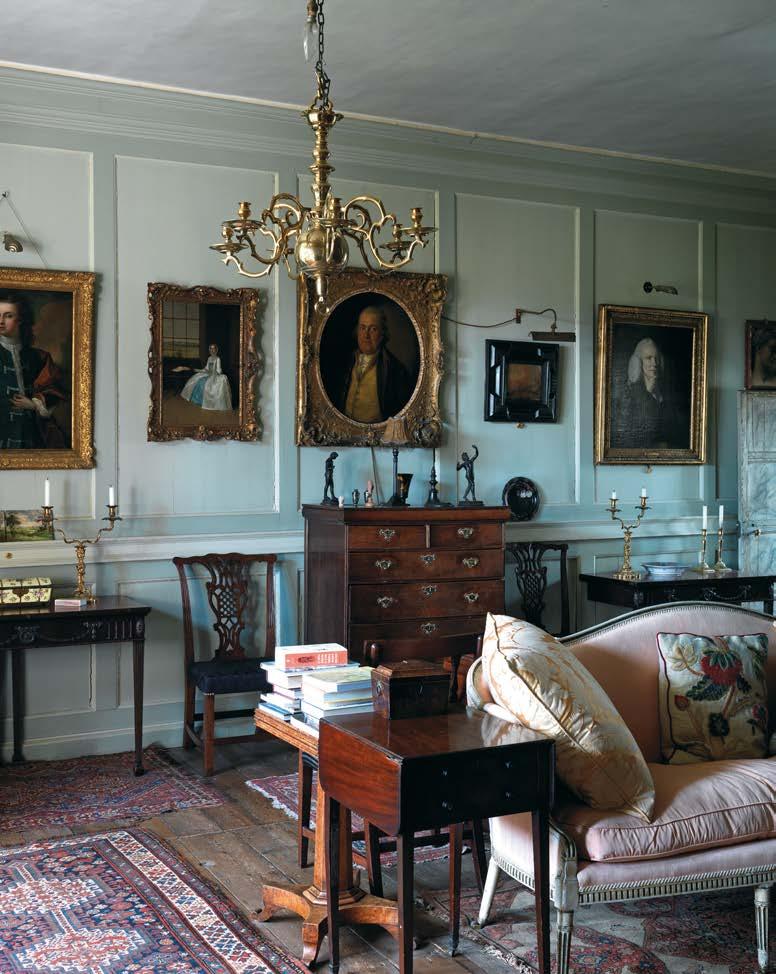
ABOVE The formality of this elegant panelled room, with its hang of antique portraits and selection of mostly eighteenth-century furnishings, is undercut and softened by enormous cushions on the demure French sofa and an untidy pile of books on the side table. RIGHT These armchairs are so plump and mounded with cushions, it seems possible to bounce straight off them. Instead, thanks to squashy feather fillings, make a nest and cover up in the woollen throws that hang over their backs.
